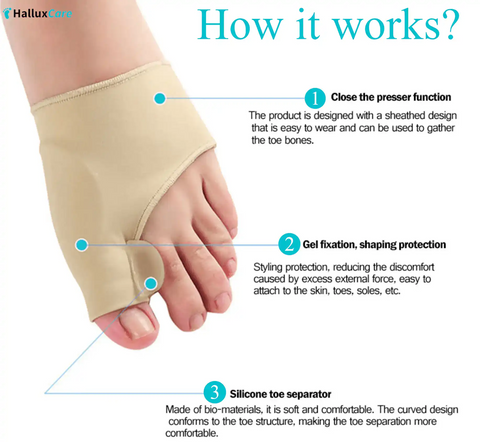Navigating Bunion Surgery for Young Athletes: What Parents Need to Know
Last Updated: Jan 12th 2025
Author: Dr. Emily Carter, DPM – Board-Certified Podiatrist and Sports Medicine Specialist
Bunions may seem like a minor inconvenience, but for athletes, they can be career-altering. This article addresses the concerns of parents and young athletes, like the Division II soccer player mentioned in a Reddit post, who are navigating the decision of whether to undergo bunion surgery. With insights from podiatry experts and practical advice, this guide will help you make an informed choice.
What Are Bunions and Why Do They Matter for Athletes?
A bunion, or hallux valgus, is a bony bump that develops at the base of the big toe, causing the joint to misalign and protrude outward. This condition often leads to pain, swelling, and difficulty wearing tight footwear. According to the American Podiatric Medical Association (APMA), bunions are especially common in individuals with a family history of foot deformities or those who wear ill-fitting shoes.
Why Athletes Are Particularly Affected
Athletes place additional stress on their feet due to repetitive movements, high-impact activities, and tight sports shoes. For young athletes, bunions can affect not only their performance but also their biomechanics, increasing the risk of secondary injuries such as shin splints, knee pain, or hip strain.
Key Challenges for Athletes with Bunions
- Pain During Activity: High-impact sports exacerbate bunion pain due to constant friction and pressure.
- Risk of Compensatory Injuries: Altered gait caused by bunions can lead to injuries in other parts of the body.
- Mental Health Impact: The uncertainty of surgery and long recovery times can be stressful for athletes committed to their sport.
To Operate or Not to Operate? The Big Question
The decision to proceed with bunion surgery is highly individual and depends on factors like severity, pain levels, and athletic goals. According to the Mayo Clinic, bunion surgery is generally recommended only when non-surgical treatments fail, and the pain significantly impacts daily activities or sports performance.
What Experts Say
Dr. Sarah Johnson, a sports podiatrist, emphasizes that surgery should be approached cautiously:
"For athletes, bunion surgery is not just about pain relief; it's about preserving function and preventing long-term complications. A tailored recovery plan is critical for returning to sports safely."
Factors to Consider Before Surgery
- Severity of the Bunion: A severe bunion with joint degeneration may necessitate surgery sooner.
- Athletic Career Goals: Consider how much downtime you can afford without jeopardizing your athletic trajectory.
- Recovery Timeline: Full recovery can take 3-6 months, with competitive play resuming even later.
Non-Surgical Alternatives
For those hesitant about surgery, non-invasive treatments can provide significant relief and slow bunion progression:
- Orthopedic Bunion Sleeves: These sleeves realign the toe and reduce pressure. 4.9 ⭐⭐⭐⭐⭐ ( 1843 reviews )
What to Expect Post-Surgery
If surgery becomes the chosen path, understanding the recovery process will help set realistic expectations.
Stages of Recovery
-
Immediate Post-Surgery (Weeks 1-2)
- Rest and elevation are essential to reduce swelling.
- A surgical boot or cast may be required to immobilize the foot.
-
Rehabilitation (Weeks 3-8)
- Physical therapy focuses on restoring range of motion and strength.
- Gradual weight-bearing activities are introduced.
-
Return to Sports (Months 3-6)
- Athletes often resume light training after 3 months, but full competition may take 6-12 months.
Potential Risks and Outcomes
According to a 2021 study in the Journal of Foot and Ankle Surgery, 85-90% of patients report satisfaction with bunion surgery outcomes. However, athletes may face challenges such as stiffness or reduced toe mobility, which could impact performance.
Practical Tips for Parents Supporting Young Athletes
As a parent, you play a crucial role in guiding your athlete through this challenging time. Here are some actionable tips:
- Educate Yourself: Familiarize yourself with bunion treatments and recovery timelines.
- Ask Questions: Don’t hesitate to ask the surgeon about risks, expected outcomes, and rehabilitation plans.
- Be Patient: Recovery can be frustratingly slow, but rushing it could lead to setbacks.
- Emphasize Long-Term Health: Help your child see the bigger picture—preserving their health and mobility is more important than a single season.
Explore Proven Solutions for Bunion Pain Relief
If surgery feels like a last resort, consider these tried-and-true products:
-
Orthopedic Bunion Pain Relief & Correction Sleeve
- Realigns the toe and alleviates pressure.
-
Tailor's Bunion Bunionette Pain Relief Protection Sleeves
- Ideal for managing bunionette pain.
-
Jamaica Black Castor Oil Soothing Oil
- Reduces inflammation and nourishes the skin.
Key Takeaways
- Bunions can impact athletic performance, but surgery isn’t the only solution.
- Explore non-surgical options like orthopedic sleeves, physical therapy, and footwear modifications.
- If surgery is necessary, choose an experienced podiatrist and prepare for a long recovery period.
- Parental support is critical—educate yourself and advocate for your young athlete’s health.
Frequently Asked Questions (FAQs)
Q: Is bunion surgery safe for young athletes?
A: Bunion surgery is generally safe but requires careful planning, especially for athletes. Consult a podiatrist specializing in sports medicine for the best results.
Q: How long before an athlete can return to sports after bunion surgery?
A: Recovery varies but typically takes 3-6 months for light activity and up to 12 months for competitive sports.
Q: Can bunions come back after surgery?
A: Yes, recurrence is possible, especially if the underlying causes, such as footwear or biomechanics, are not addressed.
Q: Are non-surgical treatments effective for athletes?
A: Non-surgical options like orthopedic sleeves and physical therapy can significantly reduce pain and slow bunion progression, though they won’t reverse the deformity.
Disclaimer
This article is for informational purposes only and does not constitute medical advice. Always consult a qualified healthcare professional for diagnosis and treatment tailored to your needs.
Share your thoughts! Have you or your child dealt with bunions as an athlete? Leave a comment below to share your experience.



